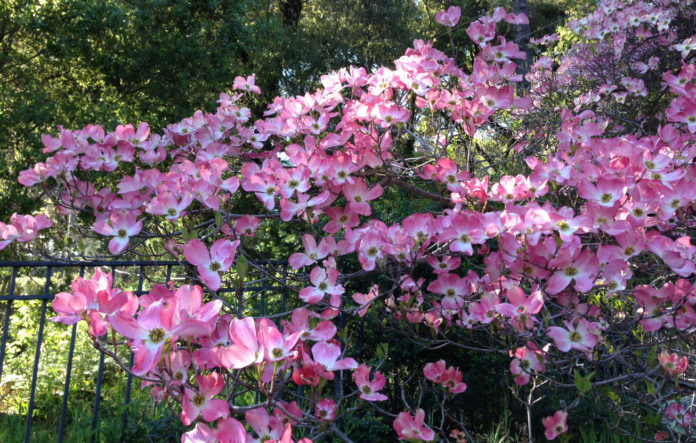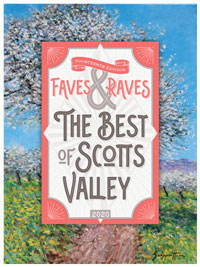I don’t know if I like the pink ones or the white ones best. A flowering dogwood in any shade is stunning. My friend Colly, the food columnist for the Press Banner, has several dogwoods in her garden, including a Cherokee Brave with dark pink flowers. They are so beautiful at this time of year and in the fall when they turn bright red.
There are four main species of dogwood trees. From the Himalayas in China comes cornus capitata. Korea is home to cornus kousa. Cornus florida is native to the east coast and the west coast is home to cornus nuttallii or the Western dogwood.
I see so many showy varieties available now. The fast growing Venus Dogwood is a hybrid of the Pacific dogwood (Corpus nutallii) and the Korean dogwood (Cornus Sousa). It has exceptionally large white flower bracts. Good disease and drought tolerance make it a good choice for the garden. The Constellation dogwood is a similar hybrid to the Venus but sterile so it doesn’t get the red fruits that the Venus produces. Perfect for the small garden.
The fast growing Stellar Pink dogwood is a cross between cornus florida and cornus kousa. With profuse, large, overlapping blush pink flower-like bracts it’s a magnificent landscape tree for small gardens that produces no fruit.
Our native Western dogwood is unfortunately prone to leaf spot fungal diseases when grown out of their range. They are a little temperamental in the garden before they reach the age of 10 years, but after that they tolerate seasonal flooding and flower and grow with little care in morning sun or light shade. They prefer moist soil.
We are all familiar with the Eastern dogwood (cornus florida) that’s blooming now. With various shades of pink, red or white blossoms they are stunning. Take note that their root system is prone to disease if not grown with good drainage. An awesome variety “Pringlei” or Mexican Flowering Dogwood is grown by a fellow gardener and it’s a stunner. With its unusual flowers that look like Chinese lanterns to the red fall color this is a species to be on the look out for.
The Wedding Cake Tree (cornus controversa “Variegate”) is another unique variety. When this small dogwood blooms the large flowers cover the tree like snow. The tiered horizontal branches resemble a wedding cake when in bloom.
Deciduous dogwoods don’t like wet feet especially in the winter. That’s how they develop fungal disease. But there’s an evergreen dogwood that can handle moisture all year round. Cornus capitata Mountain Moon is a tough tree that can handle strong winds and isn’t bothered by any pests or diseases. They enjoy lots of organic matter as do all dogwoods. Huge flowers up to 6 inches wide can last from late spring into early summer. After flowering, the fruits begin to form and grow into red balls about the size of large strawberries. This is the reason it is also known as the Himalayan Strawberry Tree.
Dogwoods attract a variety of wildlife. All sorts of critters use this tree for food and shelter. The giant silk moth and several species of butterflies favor dogwoods as host plants. The spring flowers provide nectar to bees and other pollinating insects. Robin and sparrow are just two of the bird species that build nests on the horizontal branches and many others seek shelter in the leaves. The high calcium, high fat, fleshy red fruits are eaten by 35 species of birds including titmice, juncos and waxwings.
Many people think of dogwoods as an understory tree but this location is often too shady. Grow them in a full or partial sun location that gets afternoon shade after 4pm. Add a couple of extra drip emitters or inline drip tubing to your irrigation system and they’ll be happy.
Dogwood are a good tree choice for the allergy sufferer as their pollen is not wind borne. Their showy flowers, which are actually bracts, are pollinated by insects. Their pollen is large and heavy, sticking to insects rather than becoming airborne and leading to sneezing, runny noses and watery eyes.
Jan Nelson, a landscape designer and California-certified nursery professional, will answer questions about gardening in the Santa Cruz Mountains. Email her at ja******@*ol.com, or visit jannelsonlandscapedesign.com.











